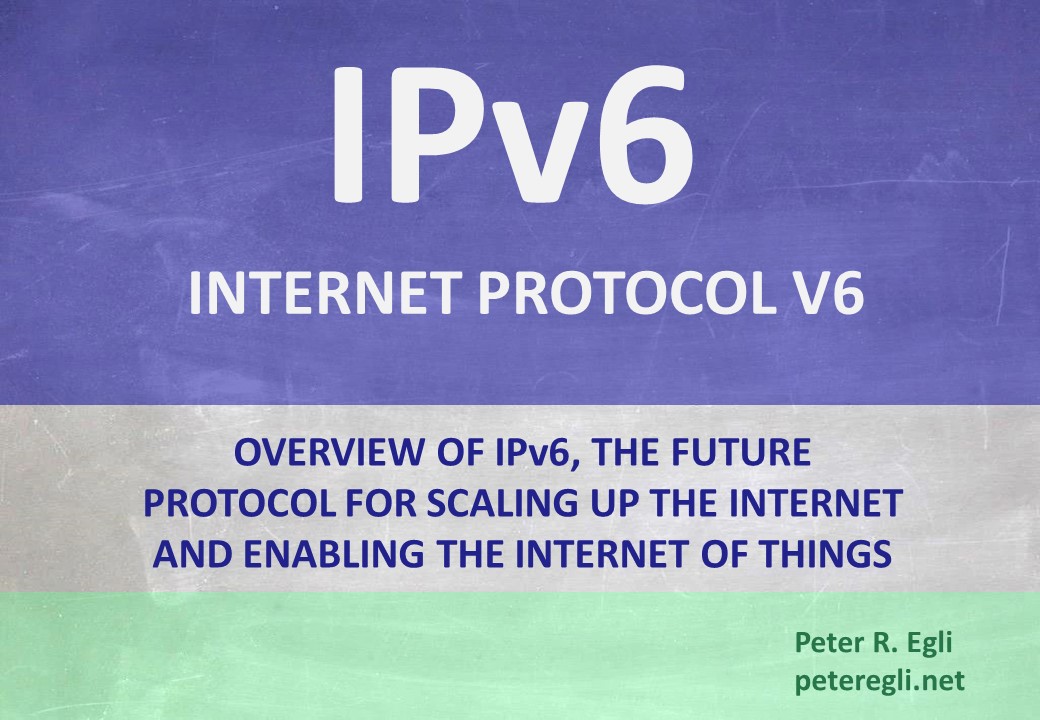Internet Protocol
Slides on Internet protocols.
-
Internet Protocol & IP Routing
Slide PresentationIP routing denotes protocols for exchanging IP address range reachability like RIP, BGP and OSPF. In contrast to IP routing, IP packet forwarding collectively means all functions performed when an IP router receives a packet and forwards it over the output interface indicated by an IP route in the routing table. Routing protocols for exchanging route information can be coarsely classified as distance vector and link state protocols. Distance vector protocols like RIP (Routing Information Protocol) exchange information about the path cost to specific targets (IP address ranges). Link state protocols like OSPF disseminate information about the link state of each router link in a network to all routers in the network.
Read More Download PDF -
IPv6
Slide PresentationIPv6 is the current and future Internet Protocol standard. As anticipated, IPv4 addresses became exhausted around 2012. The IP address scarcity is the main driver for IPv6 protocol adoption. IPv6 defines a much larger address space that should be sufficient for the foreseeable future, even taking into account Internet of Things scenarios with zillions of small devices connected to the Internet. IPv6 is, however, much more than simply an expansion of the address space. IPv6 defines a clean address architecture with globally aggregatable addresses thus reducing routing table sizes in Internet routers. Numerous transition mechanisms were developed to ease the transition from IPv4 to IPv6. Many of these mechanisms are complex and difficult to administer. The transition mechanisms can be coarsely classified into dual-stack, tunneling and translation mechanisms.
Read More Download PDF
All Rights Reserved © Peter R. Egli

